John and Fatti Burke are the father-daughter team behind the bestselling books Irelandopedia and Historopedia. They make a sweet picture sitting together in a hotel bar, him in his grey suit, up on the train from Waterford that morning, with a tiny glass of sherry in front of him, and Fatti beside him, hair piled up, dark-framed glasses and a riot of colourful tattoos poking out from her sleeves.
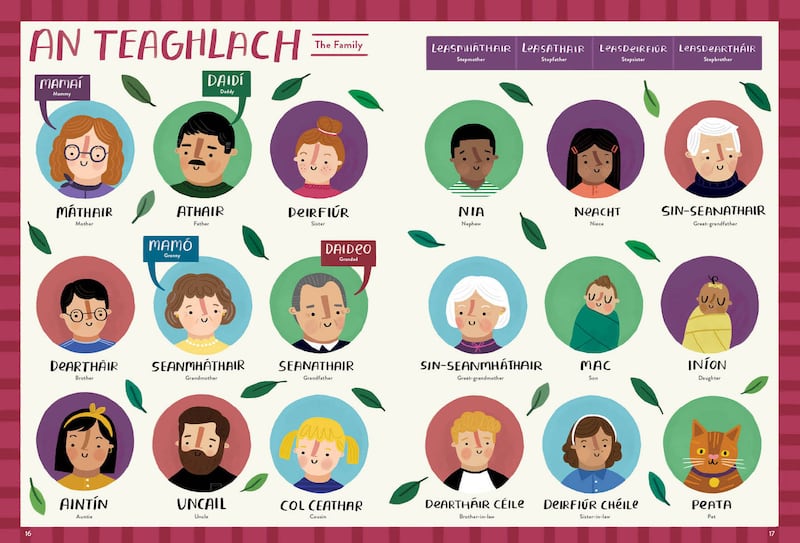
Fatti, or Kathi Burke (Fatti was a family nickname because it rhymed), is a well-known Irish illustrator, producing work for high-profile ad campaigns, and regularly for Cara magazine. It was there a publisher discovered her work and approached her about producing Irelandopedia, an encyclopaedic, trivia-filled tour around Ireland, illustrated with Kathi's colourful maps.
For Kathi, it always made sense to bring her dad in on the project. “Dad is a retired primary school teacher and they loved that idea. Until they met you, they didn’t know that you are full of stories,” Kathi says, speaking to her dad. “As soon as they met Dad they said, ‘this is perfect.’”
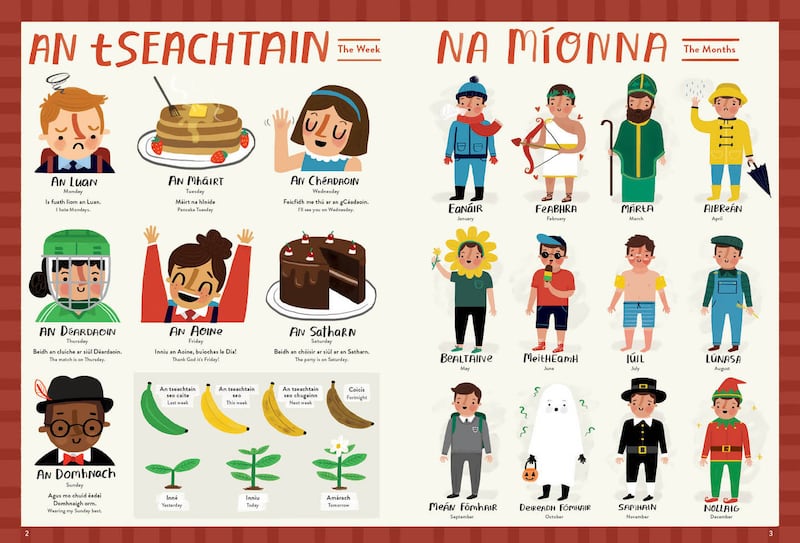
2015's Irelandopedia was an award-winning success, followed in 2016 by Historopedia, an illustrated compendium of Irish history, from the Celts to Partition. (There's even an illustrated John Hume. ) Now the two have collaborated for a third time on Foclóiropedia, A Journey through the Irish Language from Arán to Zú. It is another big, colourful book teeming with useful words and phrases that many adults will have long forgotten.
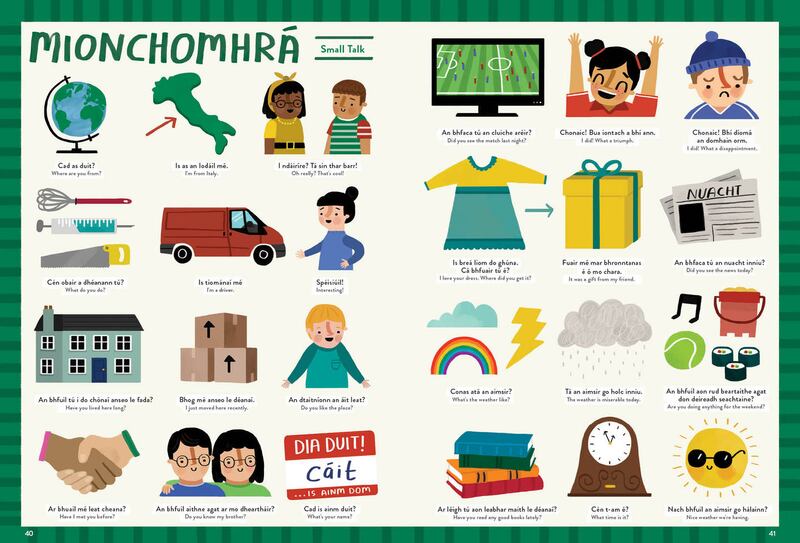
John describes coming up on the train with the book opened on the table in front of him. “I was so proud of it, watching people going past looking over their shoulders.”
From the outset, John had no hesitation about working with his daughter.
“It was a privilege. I know very well my name would not be on a book if it weren’t for Kathi’s illustrations. The kids are just amazed by them. Little ones that can’t read are lying on the mat, looking at the pictures.”
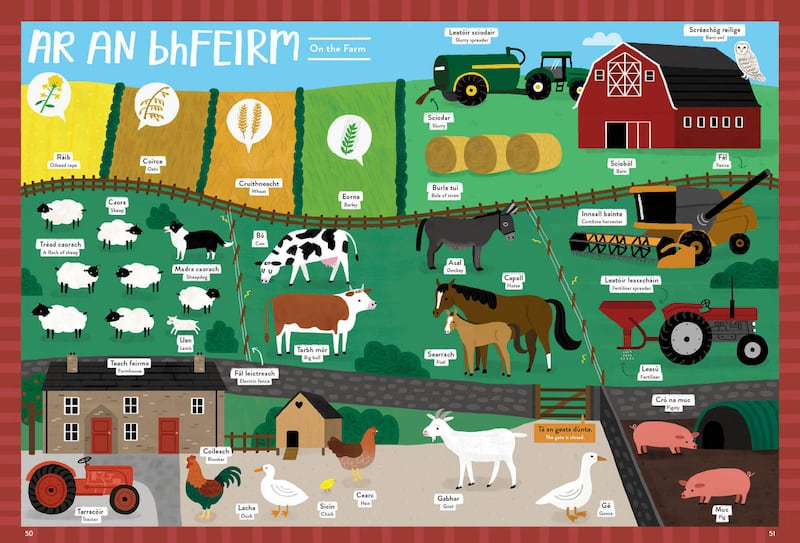
After Historopedia, Kathi had been inspired by reading about the Gaelic revival and decided to brush up on her Irish. "I felt kind of guilty that I didn't know that much Irish, even after doing it at school for so many years. [The publishers] said, 'That's a great idea. Let's do one as Gaeilge'."
Having taught primary school, John’s Irish was better than Kathi’s. He talks about his delight at the recent change in attitudes to the Irish language. “Since we’ve been writing the books I’ve been invited to primary schools to talk to children and I have been quite surprised at how ready they are to speak as Gaeilge.
“The lack of fear, of people being judgmental because you might have said something slightly incorrectly, they don’t have that.
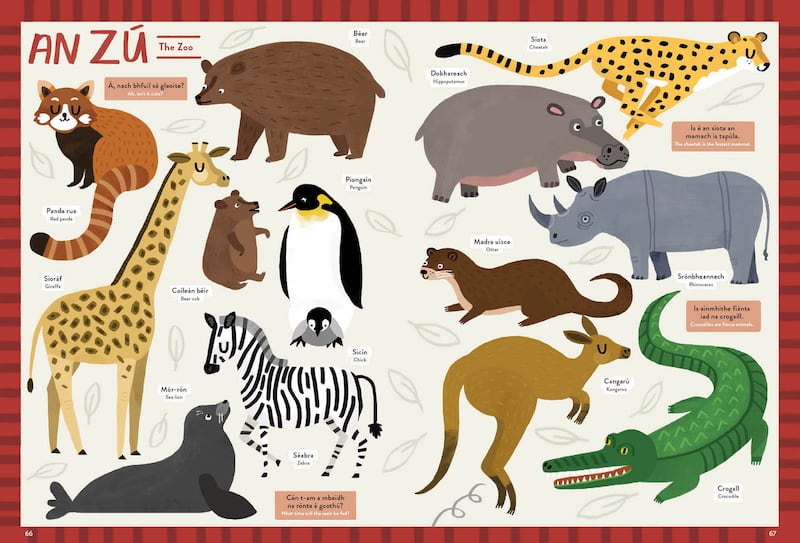
“We were all afraid. You knew if you said something wrong you’d have the raised eyebrows or the disapproving looks. It was always going to take a few generations for it to go because they made awful mistakes in the beginning: making it compulsory, and having this air of ‘you’re not a proper Irish person if you can’t do this’. People would use it as a weapon to put someone in their place. They’d change from Béarla into Gaeilge to see how [others would] cope with it. And then you’d have the civil-service Irish, which I hated.”
With Foclóiropedia, simplicity was key. It is broken down in sections such as the classroom, food, feelings, clothes (húdaí for hoodie was a new one on me). I mention one word from the Feelings section that I had no idea was Irish: "pus", the Irish for sulk, as in "He had a pus on him". It's nice to find you've been using Irish by accident.
“We didn’t do many verbs or tenses, or grammar,” says Kathi.
“What we really wanted to give them were lots of sentences and phrases that they could use in ordinary conversation,” adds John.
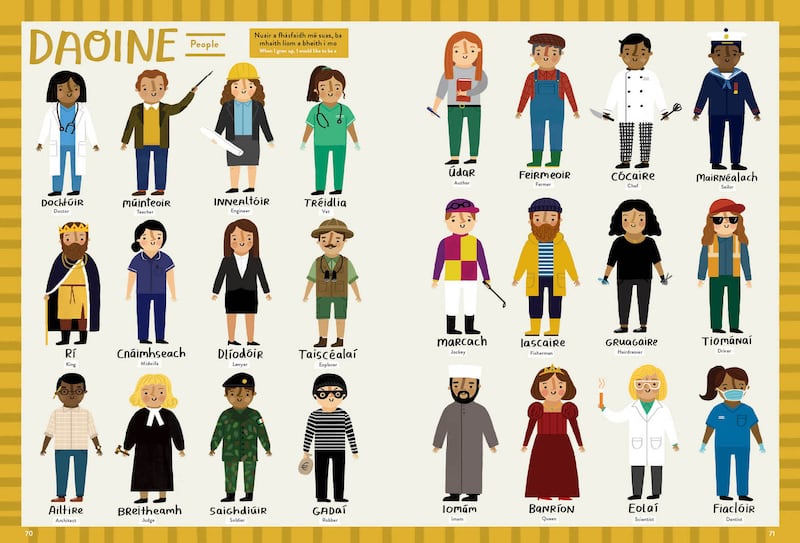
It's clear too that the gender roles and homogeny of the old Irish textbooks are long gone. In the Daoine section, there's a sagart, but also an imám and a raibí. In the illustrations, the women are inventors, pilots and carpenters. "I do that quite consciously," Kathi says. She was restricted in Historopedia, "because a lot of history is made by white Irish men, but with this one I had free rein."
There is also a heartwarming seanfhocail section with carefully illustrated proverbs like “Is é do mhac do mhac inniu, ach is í d’iníon d’iníon go deo,” (Your son is your son today, but your daughter is your daughter forever) and a section on the origin of place names, which John had great fun compiling.
We talk a little about the stern approach to Irish growing up: people sent home from the Gaeltacht for speaking a word of English. “You’d rather just not say anything,” Kathi says. And in school, there was the dismay at being handed back essays bleeding red from all the corrected grammar.
Kathi mentions a recent conversation she had with Darach Ó Séaghdha, the man behind the Twitter account @theirishfor and the new book Motherfoclóir. "He was saying that there's two schools of people who are using Irish. One says that Irish should be spoken perfectly and constantly, the other one is including it loosely in English. This book is very the second one – throw words into your normal everyday."
Does John feel like this is redressing the way Irish was taught before? Not in his classes, where a book was only a teaching aid, he says. “I’m not an artist like Kathi but I used to love standing at the blackboard with my coloured chalks and illustrating things and get the children as pro-active as possible.”

Kathi is very aware that books like this are competing with apps and screens for children’s attention. She mentions seeing a baby trying to zoom in on the pictures in a book. “You don’t want them to be too wrapped in cotton wool and relying on apps to entertain them, so parents definitely appreciate having a big book for them to read and to get lost in.”
They never dreamed the books would be as popular as they are. John sees them as “a decent present” from a grandparent, whereas Kathi sees an interest from tourists, and illustrator friends. They have also benefitted from a recent resurgence in the popularity of illustration, perhaps a pushback against the clean lines of technology.
“When I was in college, I was worried that I was going to have to emigrate,” Kathi says. But, during the recession, “lots of agencies and PR companies were going to Irish talent. [Illustration] is cheaper and everyone was being very crafty because they couldn’t afford to do everything CGI. Then it just kinda stuck.”
Kathi thinks they will leave it as a trilogy, for now, so she can turn her hand to other work, including writing books herself. “It’s weird not having dad there to help me out.”
John may be retired, but like so many, he isn't very good at it. "I'm kind of looking forward to proper retirement, if it ever happens," he says with a laugh. Alongside the books, he's in choirs and a local history society. And he'd love to have a go at an Irelandopedia for England, "mainly for my own sake, so I would have a reason to learn more".
Did John ever worry about Kathi’s future as an artist? “I think it was in fifth year that you told us you were confident on art,” John says to Kathi. “Janet and I, we were a little bit stunned for a moment because we had to think about it. It didn’t sound great and I had visions of her out in the back yard with a big lump of granite trying to make a statue out of it.”
Kathi explained to him about illustrating and graphic design. “There’s barely anything that doesn’t have lettering, colouring, so in fact there’s no end to the work.” He mentions her work that has ended up on Dublin buses, or “Kathi’s buses”, as he calls them now.
Eager for a bit of adventure, Kathi is moving to Amsterdam soon. “It’s a really creative city. I just wanted a change of scene.”
“It’s not necessarily a long-term thing,” her dad adds. “And you’ll be back at Christmas, won’t you?”
“Of course I will,” Kathi says to her dad. “In a new city, there’s new inspiration, new smells, new shapes and colours and buildings. I’m already thinking of different things I can do.”












